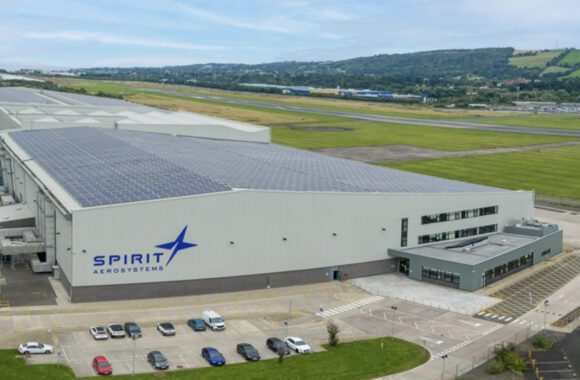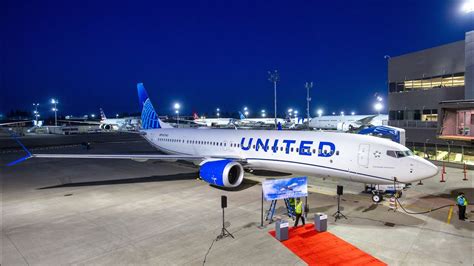[Typically our Premium stories are subscriber access only. We are opening this one as a sample.]
The issue of an A380neo reappeared again at the recent A350XWB first delivery event in Toulouse. While the question wasn’t directly related to the A350XWB, Qatar did have its fourth A380 outside the Airbus delivery center and clearly it is an item on the mind of not only Airbus and Emirates, but also Qatar’s CEO. Mr. Al-Baker deftly parried the question and expressed confidence in the aircraft as it is.
This does not mean Airbus can avoid the inevitable A380neo – it is not a matter of “if”, it is a matter of “when”.
We expect that both Airbus and Emirates will want an engine competition. This ensures an honest outcome for them. Other A380 operators will also benefit.
Looking at the A380 program today, there is no doubt that the economic rationale for developing a neo is tough. The decision is being forced on Airbus by Emirates. Emirates is forcing this because of the expectations that the 777-9 will offer significantly better economics than the existing A380. Since Emirates won’t be flying a 777-9 before 2020, Airbus has some time to work on an A380neo, but not a lot. To have a response ready for 2020, Airbus has to start the process of defining an A380neo and a stretched A380-900 soon, ideally in 2015. That aircraft definition then has to be shared with Rolls-Royce and Engine Alliance.
Both engine firms will need to see an attractive return on investment to bid. Currently, the outlook appears on a distant horizon, making potential investment in a neo engine unattractive. Therefore, engine manufacturers will need to select something from their current inventory so as to minimize capex and costs. The A380neo program risk is quite real — Mr. Leahy’s enthusiasm notwithstanding. An industry rule of thumb says that for each 1% improvement in fuel burn, an engine maker has to invest $100m. To achieve the >10% in improved fuel burn that Emirates wants is a $1bn bet. This is why Airbus has not raced forward to engage with engine makers on an A380neo.
There are a number of factors that one needs to consider pondering the case for an A380neo:
- Can Airbus’ plans give the engine makers time? This can be done by Airbus working on the A380 design in the shorter term (like adding sharklets) to start a fuel burn improvement process. In the longer term this gives engine makers time to work on improved engines.
- A four engined aircraft thrust focuses on climb rate, not takeoff. Therefore engines are likely to be de-rated from current options. The Trent XWB gives Rolls-Royce a potential advantage here. Engine Alliance (EA) has to come up with something novel, if not new.
- Is there a way Airbus can make the engine selection process more attractive? For example, even as an A380neo is being considered, there is also a potential engine required for a potential A350-1100. The A350-1000 engine is an evolution of the base engine on the A350. Moreover since the A350-800 is out of the picture Rolls-Royce’s A350 plans have taken a dent. However, the exclusivity on the A350 program gives Rolls-Royce an advantage on any growth A350.
- Pratt & Whitney and GE both seem reluctant to invest in the A380neo. However we think the EA team will be pressurized by Airbus and Emirates to come up with an option.
Since we expect engine makers to deploy existing engine technologies, we think Rolls-Royce is likely to use its Trent XWB with 84K thrust as the basis for an A380neo engine. The Trent XWB is a fine piece of engineering and state of the art.
EA faces an even more complicated response. GE Aviation CEO David Joyce is uncertain about the business case. But note the language used – “a new engine”. The complication goes one step further. EA is a one-trick pony. The company makes one engine (GP7200) found on one aircraft, the A380. It has been very successful however, and it has the largest market share on the A380. Moreover Airbus’ Orange Book shows the GP7200 as the more fuel efficient of the two engine choices. This gives EA a good starting point looking ahead at an A380neo.
Since we believe that Airbus (and Emirates) will pressurize EA for some sort of response, we expect EA to turn to its partners and forcefully request an offering. This request is not an insurmountable hurdle. Mr. Joyce, perhaps, does not need to offer a “new engine”.
We think just like Rolls-Royce, EA would turn to their current offerings for a solution. It would perhaps mean spending more money than Rolls-Royce for an A380neo solution, but it should not be prohibitive even with a stretched out ROI. After all, both EA partners see a benefit in bleeding Rolls-Royce. That outcome should offer EA partners a lot of value, therefore improving the ROI.
Our thinking would be that GE could offer an engine based on the GP7200. The latest A380s powered by the GP7200 benefit from GE’s GEnx, offering improvements over the earlier GP7200. An EA engine for the A380neo, which we hypothetically call the GP8000, would improvements from the GEnx program and the Pratt & Whitney GTF.
Taking the core of the GP7200 engine, with refinements from the GEnx and adding a larger fan plus a gear from Pratt & Whitney could create a disruptive offering. Take a look at what we have in the market today. Bypass ratios are rising and the GTF is the leader by far.
 A key number here is thrust – we estimate the A380neo and stretched -900neo requires 80,000 plus pounds of thrust per engine. This means a current Trent XWB could be used and the GP7200 would be uncompetitive. But what about an engine combination that we describe above?
A key number here is thrust – we estimate the A380neo and stretched -900neo requires 80,000 plus pounds of thrust per engine. This means a current Trent XWB could be used and the GP7200 would be uncompetitive. But what about an engine combination that we describe above?
Below are our estimates of what a GP8000 engine might entail.
 Because of the geared fan, a potential GP8000 engine could have a bypass ratio much higher than the current 8.8 on the GP7200. This also means deploying a larger fan than the current 116 inches. We estimate such an engine offers some key advantages over the GP7200:
Because of the geared fan, a potential GP8000 engine could have a bypass ratio much higher than the current 8.8 on the GP7200. This also means deploying a larger fan than the current 116 inches. We estimate such an engine offers some key advantages over the GP7200:
- Fuel burn reduced 12%
- Noise reduced 40%
- NOx reduced 15%
- CO2 reduced 12%
- Maintenance reduced 7%
The maintenance savings are very important and, for an airline like Emirates where dust causes more frequent maintenance, savings would add up quickly. The lower fuel burn is at the target Emirates’ CEO has requested. And the GP8000 offers much improved green numbers too. The current A380 is already quiet, so an even quieter neo version opens up more slot opportunities at noise constrained airports like Frankfurt, Heathrow and Paris to mention three important A380 hubs in Europe.
The GP8000 might utilize a gear ratio of three to one, with potential to later increase the ratio to further improve performance. These improvements could be far simpler than what Rolls-Royce would face tweaking their Trent XWB, which is not geared. Combining the Pratt & Whitney geared-fan drive system with the core of a refined GP7200 could produce an interesting alternative to the Trent XWB.
So while GE’s Mr. Joyce might not feel comfortable about a new engine for the A380, deploying existing GEnx technology in the core of a new design might be acceptable. The expense may annoy – but think of the damage losing the A380neo would do to Rolls-Royce, which has become nearly exclusive on new Airbus wide-bodies. That impact will be long lasting and constrict Rolls’ R&D on future engine programs.
Even though our GP8000 idea is entirely speculative, we think EA might want to, or perhaps already has, started to think along these lines.
Views: 22




What is about RR Trent 1000-TEN like options for the A380neo?
The engine is scheduled to be certified to 78,000lbs thrust by the end of 2015 (for B787-10, but this is the same trust level like Trent 970B).
Most of the ground testing for the GP7200, and for the Trent 900, was performed at thrust levels up to and beyond 81,000lb, because at the time such a maximum take-off thrust was deemed necessary for the planned A380-800 Freighter, which Airbus then canceled before either engines was certificated. The GP7200 is officially certificated to 77,000lb of MTO thrust and the Trent 900 is too. This means that both engines would be capable of powering any A380neo and A380-900. However, both engines would need to be updated to provide the fuel-efficiency that Airbus and its customers would demand. Both the Engine Alliance and R-R have assured me that they have performed all the engineering design studies for a variety of updates that Airbus might require and they only need business-case approval (and of course a requirement from Airbus) in order to proceed.
I agree that the one remaining is the Trent 1000-TEN (or the Trent 7000 as its called for the A330neo), is the same thrust class than Trent 900 and GP7000.
I think it is worthy to mention that the Trent XWB has already been flying on an A380 since February 2012 (the flying Test Bed of this engine was an Airbus A380), therefore Airbus could have some real data about integration of Trent XWB+A380 confirming any prediction of benefit from existing engines. The commonality with A350 fleet could be exploited as well as another selling point of the A380 against B777X for airlines that already have selected the A350 (although this is also applicable to the Trent 7000 and GEnx options, for airlines selecting A330neo and B787) . However the thrust class of the Trent XWB is probably a bit high for the A380 (would need to be de rated as for the A350-800), but for an stretched A380neo it would clearly be a good alternative.
It is difficult to think that GE can partner with P&W once again for a potential competitor of the B777X where they are sole source , the most probable competitor for RR on the A380neo could be a brand new engine from P&W with Geared architecture, but this will take significant time to develop and some technical risks (including engine+aircraft integration)
As I recall, Airbus wanted two engines on the A350 and did not get it as GE felt it was not in their best interest and P&W had no offering.
The only A380 sales were the silly 20 that Amadeus (whoever they morphed into) has that are as weird an firm deal that has ever been made sort of public as we have ever seen.
As the case for a single NEO A380 is nebulous at best and never a return business wise why in the world would GE, PW or the GP alliance cause themselves that kind of grief? You don’t jus throw components together and get an free ride, its an all new engine with all its cost and just to loose money?
I suspect Airbus feels they have to keep making the A380 and RR will accommodate them in the engine to both their long term detriments and the A380 will continue to sell in low numbers and paying the piper is coming due.